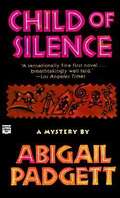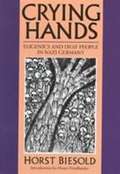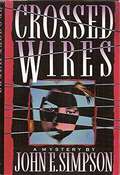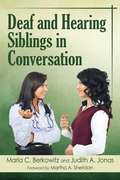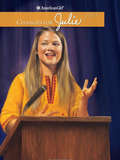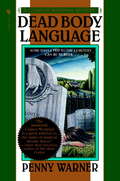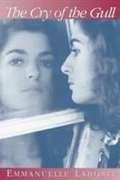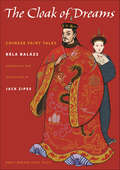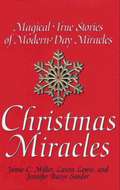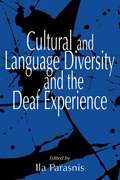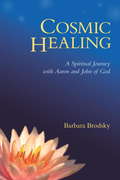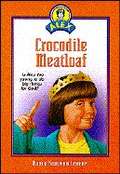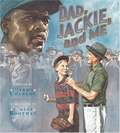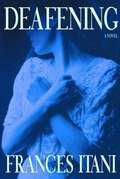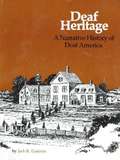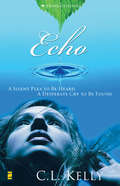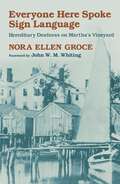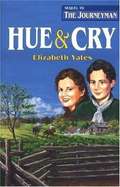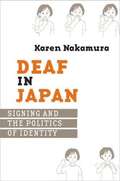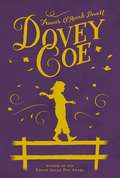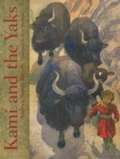Special Collections
Deaf Special Collection
Description: A strong collection featuring biographies, fiction and non-fiction by and about members of the deaf community. For books by and about individuals who are deafblind, visit https://www.bookshare.org/browse/collection/194343 #disability
- Table View
- List View
Child of Silence
by Abigail Padgett1st in mystery series. Bo Bradley, child abuse investigator with manic-depression rescues deaf child. Light, fast read, but excellent depiction of what's now called bi-polar disorder.
Crying Hands
by Horst Biesold and Williams SayersExposes the active collusion with the Nazis of various physicians, administrators, and teachers of the deaf who embraced the Third Reich's eugenics policies. Documents the collusion of deaf leaders, who tried to incorporate all independent deaf groups into one Nazi organization while expelling deaf Jews, and traces resistance against the Third Reich by deaf Germans. Includes personal accounts of some of the 1,215 deaf victims of enforced sterilization, demonstrating the lasting physical and emotional pain of Nazi violations. The author is a retired professor and teacher of deaf students.
Crossed Wires
by John E. SimpsonCrossed Wires, a highly original mystery novel, introduces readers to an unusual heroine, who is being stalked by a particularly chilling serial killer. Finley is tenacious, sympathetic, and attractive. What then makes her an unusual sleuth? Finley is deaf. And Finley and the murderer who hunts her inhabit, literally, a new world -almost a new dimension. They live an important part of their lives within the electronic bulletin boards accessed by their personal computers.
Finley, whose hearing impairment makes her vulnerable, has learned to live and rely upon faceless friends, especially Tracy and Jane, she knows only through her modem. She works as a researcher at CIAC, the National Crime Information and Analysis Center in New Brunswick, New Jersey, a very sophisticated clearing house for law enforcement agencies. Even without romance, life is pretty good for Finley, with a challenging job as an electronic detective and an apparently reliable set of friends, until one beautiful fall morning the ebullient Tracy is murdered - her throat slashed and her computer's memory wiped clean.
Deaf And Hearing Siblings In Conversation
by Marla C. Berkowitz and Judith A. JonasThis is the first book to consider both deaf and hearing perspectives on the dynamics of adult sibling relationships. Deaf and hearing authors Berkowitz and Jonas conducted interviews with 22 adult siblings, using ASL and spoken English, to access their intimate thoughts. A major feature of the book is its analysis of how isolation impacts deaf-hearing sibling relationships. The book documents the 150 year history of societal attitudes embedded in sibling bonds and identifies how the siblings' lives were affected by the communication choices their parents made. The authors weave information throughout the text to reveal attitudes toward American Sign Language and the various roles deaf and hearing siblings take on as monitors, facilitators, signing-siblings and sibling-interpreters, all of which impact lifelong bonds. Included: questions for guided discussion, extensive bibliography, and other features.
Deaf Culture A to Z
by Walter Paul Kelley"A is for American Sign Language. American Sign Language (ASL) is the language of signs used among many Deaf people. Each sign represents a word or words. In the picture on the right, the boy is signing, "What should I do?" The librarian answers, "You can read a book on Deaf Culture." ASL is a beautiful language and it is fun to learn."
Changes for Julie
by Megan Mcdonald[Back Cover] Julie is in fifth grade-and in trouble! She was only helping her friend Joy, who is deaf, but her teacher doesn't care. After serving time in detention, Julie sets out to change the system. To do that, she'll have to win the election for student body president, running against the most popular boy in the school. As the election heats up, Julie tries to get the kids to listen to her ideas. When she realizes that the other kids don't like Joy, her choice for vice president, she considers dropping out of the race. But the last thing she wants is to hurt Joy's feelings-or lose her as a friend.
Dead Body Language
by Penny WarnerThirty-seven year old journalist, Connor Westphal, has relocated from San Francisco to Flat Skunk, a mining-turned-tourist town in the foothills of the Sierras, to start up her own weekly paper. Suddenly, dead bodies begin turning up in the most unusual places, setting Connor on a hunt for a killer. You might say Connor has a sixth sense when it comes to investigating...but she only has four of the usual five senses. Connor Westphal is deaf. But being hearing impaired doesn't stop Connor from pursuing the murderer. Without sound to distract her, she attends to subtleties that others overlook and ultimately unravels the mystery.
The Cry of the Gull
by Emmanuelle Laborit and Constantina Mitchell and Paul Raymond CoteA memoir by a deaf, French actress who starred in the French production of Children of a Lesser God.
The Cloak of Dreams
by Béla BalázsIntriguing fairy tales by the librettist of Béla Bartók’s opera Bluebeard’s CastleA man is changed into a flea and must bring his future parents together in order to become human again. A woman convinces a river god to cure her sick son, but the remedy has mixed consequences. A young man must choose whether to be close to his wife's soul or body. And two deaf mutes transcend their physical existence in the garden of dreams. Strange and fantastical, these fairy tales of Béla Balázs (1884-1949), Hungarian writer, film critic, and famous librettist of Bluebeard's Castle, reflect his profound interest in friendship, alienation, and Taoist philosophy. Translated and introduced by Jack Zipes, one of the world's leading authorities on fairy tales, The Cloak of Dreams brings together sixteen of Balázs's unique and haunting stories.Written in 1921, these fairy tales were originally published with twenty images drawn in the Chinese style by painter Mariette Lydis, and this new edition includes a selection of Lydis's brilliant illustrations. Together, the tales and pictures accentuate the motifs and themes that run throughout Balázs's work: wandering protagonists, mysterious woods and mountains, solitude, and magical transformation. His fairy tales express our deepest desires and the hope that, even in the midst of tragedy, we can transcend our difficulties and forge our own destinies.Unusual, wondrous fairy tales that examine the world's cruelties and twists of fate, The Cloak of Dreams will entertain, startle, and intrigue.
Christmas Miracles
by Jamie MillerAt Christmas, our hearts are touched by reports of wondrous occurrences that make us stop, reflect, and hope. This luminous book shares true accounts of Christmas miracles-- inspiring events that happened to real people at Christmas time, including:
A Christmas Mystery: A deaf boy's generosity is miraculously rewarded
First Christmas: Newlyweds take part in the local Christmas pageant -- and receive a surprising lesson in timeless love
My Christmas Angel: A pro baseball player visits a children's ward to cheer the patients, and is himself transformed
A Heart for Christmas: A series of coincidences brings new life to a little girl
The Stranger: A gentle, mysterious Christmas Eve visitor awes a family
Christmas Saved My Mother: A rabbi tells how his mother, fleeing the Holocaust, was spared on Christmas Eve
George Misses a Shift: Sudden car trouble on Christmas night saves a couple's life... and more.
Albert Einstein said, "There are only two ways to live your life. One is as though nothing is a miracle. The other is as if everything is." If you believe in miracles -- or want to -- let Christmas Miracles light the candle of hope in your heart this year.
Cultural and Language Diversity and the Deaf Experience
by Ila ParasnisThis edited volume provides a comprehensive analysis of deaf people as a culturally and linguistically distinct minority group within American society. Many educators, linguists, and researchers now favor this position, as opposed to that which states that a deaf person simply has an audiological disability. Contributors to this book include members of the deaf community, as well as prominent deaf and hearing educators and researchers. The text contains three sections, covering research on bilingualism and biculturalism, the impact of cultural and language diversity on the deaf experience, and first-hand accounts from deaf community members that highlight the emotional impact of living in the deaf and hearing worlds.
Cosmic Healing
by Barbara BrodskyWith the onset of sudden profound deafness at the age of 29, Barbara Brodsky set out on a quest to understand the nature of illness and healing, examining the interrelationship of mind and body and our capacity to transcend limitation. Asking the questions What is healing? Who and what heals? Why do some people heal while others do not? she discusses karma and free will, our habit of identifying with a limited sense of self, and our potential for greater healing.
A longtime Buddhist practitioner who began meditation in the '60s, Brodsky discovered a new path on her healing journey when she began channeling the spirit Aaron in 1989. Based on three decades of meticulously kept journals, Cosmic Healing weaves together Brodsky's Buddhist teachings, channeled material from Aaron, exercises for the reader, and an account of her experiences with the healer known as John of God (João Teixeira de Faria) at his teaching center, Casa de Dom Inácio, in Brazil. While Cosmic Healing is channeled in part and has deep roots in traditional dharma, it is at heart a universal story of human growth and discovery. Old beliefs limit us every day. But as Brodsky discovered and teaches, we can learn to recognize such limiting beliefs, transcend them, and live a deeper truth.
Crocodile Meatloaf
by Nancy Simpson LeveneAs she becomes friends with Rachel, a deaf girl who has joined her sixth-grade class, Alex begins to feel that God has given her a mission to protect Rachel from the boy who is tormenting her.
Dad, Jackie, and Me
by Myron UhlbergJackie Robinson is the new first baseman for the Brooklyn Dodgers--and the first black player in Major League Baseball. A young boy shares the excitement of Robinson's rookie season with his deaf father.
Winner of the Schneider Family Book Award
Deafening
by Frances ItaniThis novel interweaves the lives of its two main characters - Grania, deaf since age five; and her husband Jim, who serves as a medic on the battlefields of World War I. The story begins with Grania's childhood in a small Canadian town, and her years at a residential school for the deaf. Her relationships within her family are portrayed with insight and depth. Jim leaves for Europe two weeks after his marriage to Grania, and much of the book involves his horrifying experience of the war. The author based Grania's character on her own grandmother, who was deaf, and has done extensive research on both deaf history and the social history of the World War I era. This is an absorbing novel and gives a refreshingly rounded depiction of a woman with a disability.
Deaf Heritage
by Jack GannonThis in-depth history of Deaf America begins with an overview of the early years. Each chapter then covers a decade of history, beginning with 1880. The text is supplemented by marvelous pictures, illustrations, vignettes and biographical profiles. "Subchapters" chronicle the multi-facited dimensions of Deaf culture by focusing on Deaf athletes and more. A complete Deaf Culture course!
Echo
by C. L. KellyIn book two of the Sensations series, Cassie Dixon's getaway to the mountains with her friends and their thirteen-year-old deaf son becomes a high-stakes search when the boy disappears. Danger stalks the slopes.
Everyone Here Spoke Sign Language
by Nora E. GroceFrom the seventeenth century to the early years of the twentieth, the population of Martha's Vineyard manifested an extremely high rate of profound hereditary deafness.
In stark contrast to the experience of most deaf people in our own society, the Vineyarders who were born deaf were so thoroughly integrated into the daily life of the community that they were not seen-- and did not see themselves-- as handicapped or as a group apart. Deaf people were included in all aspects of life, such as town politics, jobs, church affairs, and social life.
How was this possible? On the Vineyard, hearing and deaf islanders alike grew up speaking sign language. This unique sociolinguistic adaptation meant that the usual barriers to communication between the hearing and the deaf, which so isolate many deaf people today, did not exist.
Five Flavors of Dumb
by Antony JohnThe Challenge: Piper has one month to get the rock band Dumb a paying gig.
The Deal: If she does it, Piper will become the band's manager and get her share of the profits.
The Catch: How can Piper possibly manage one egomaniacal pretty boy, one talentless piece of eye candy, one crush, one silent rocker, and one angry girl? And how can she do it when she's deaf?
Piper can't hear Dumb's music, but with growing self-confidence, a budding romance, and a new understanding of the decision her family made to buy a cochlear implant for her deaf baby sister, she discovers her own inner rock star and what it truly means to be a flavor of Dumb.
Winner of the Schneider Family Book Award
Hue & Cry
by Elizabeth YatesJared Austin, staunch member of the mutual protection society that defends his 1830s New Hampshire community against thieves, tries to temper justice with mercy when his deaf daughter Melody befriends a young Irish immigrant who has stolen a horse.
Deaf in Japan
by Karen NakamuraUntil the mid-1970s, deaf people in Japan had few legal rights and little social recognition. Legally, they were classified as minors or mentally deficient, unable to obtain driver's licenses or sign contracts and wills.
Dovey Coe
by Frances O'Roark DowellThere have been Coes living in the mountains of Indian Creek, North Carolina, going on forever, and everyone in town is amazed that twelve-year-old Dovey might ur and do such a terrible thing. Even if the girl does have the tendency to shoot her mouth off, she's had good reason since she's always had to stick up for her brother, Amos, who may be older and bigger, but folks treat like he's slow on account of his being deaf. Her sister, Caroline, might shake her head over Dovey's high spirits, but if Caroline hadn't been letting the likes of Parnell Caraway hang around her all summer, Dovey wouldn't be in this mess. Dovey's not one to sit back when troubles are brewing, but now with this murder charge, for once she might just have to keep quiet and let the slick city lawyer take care of things, or will she?
Kami and the Yaks
by Andrea Stenn StryerJust before the start of a new trek, a Sherpa family discovers that their yaks are missing. Young Kami, anxious to help his brother and father maintain their livelihood, sets off by himself to find the wandering herd. A spunky deaf child who is unable to speak, Kami attempts to summon the yaks with his shrill whistle. Failing to rout them, he hustles up the steep mountainside to search the yaks' favorite grazing spots. On the way he encounters the rumblings of a fierce storm which quickly becomes more threatening. Surmounting his fear of being alone in the midst of treacherous lightning and hail, Kami uses his heightened sense of observation to finally locate the yaks. Reunited with their animals, the astonished family is once again able to transport their gear and guide the mountain climbers into the majestic terrain.
Winner of the Schneider Family Book Award
The Deaf Musicians
by Pete Seeger and Paul Dubois JacobsLee is a piano man. Every night, he plays jazz for the crowd. It sounds something like this:
Plink-a-plink-BOMP-plink-plink.
Yimba-timba-TANG-ZANG-ZANG.
One night, Lee's bandmates notice something is off. Lee's music comes out like this:
Ronk. Phip. Tonk.
There's no way to hide it: Lee is losing his hearing. Then Lee discovers sign language. And soon after, he meets Max, who plays the sax. Together they form a new band-the Deaf Musicians. But who will listen to a deaf musician?
With The Deaf Musicians, Pete Seeger, Paul DuBois Jacobs, and three-time Coretta Scott King Honor winner R. Gregory Christie present an inspiring story of overcoming obstacles, set to a jazzy score.
OO-AH, BE-DOOP, BE-DOOP, OO-AH, YEAH!
Winner of the Schneider Family Book Award
Anything But Silent
by Mark DrolsbaughThis book is a compilation of the most thought-provoking articles by deaf writer Mark Drolsbaugh. With a blend of humor and insight Drolsbaugh tackles some of the most profound topics in deafness deafhearing relationships the rift between American Sign Language and English the hidden world of the hard of hearing oppression in politics and education idiosyncrasies of the deaf and hearing and may others. Anything But Silent offers a deaf perspective that will bring knowing smiles to those familiar with the deaf community and enlightenment to those who are new to it.
